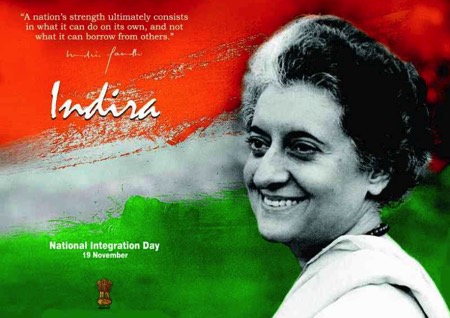Focus: GS 1; Modern Indian history from about the middle of the eighteenth century until the present significant events, personalities, issues.
Paper 1; Indian and World Geography-Physical, Social, Economic Geography of India and the World.
Why in News?
The Prime Minister Shri Narendra Modi inaugurated dynamic lighting for the Sardar Sarovar Dam. He unveiled the website of Statue of Unity in all the UN official languages and launched the Kevadia App, at the Unity Glow Garden. He inaugurated and visited the Cactus Garden.
About Sardar Sarovar Dam;-
- The Sardar Sarovar Dam is a concrete gravity dam on the Narmada river in Kevadiya near Navagam, Gujarat in India. Four Indian states, Gujarat, Madhya Pradesh, Maharashtra and Rajasthan, receive water and electricity supplied from the dam.
- The Dam name is kept based on India’s First Deputy PM i.e. Sardar Vallabhbhai Patel ,popularly referred to as “IRON MAN OF INDIA”.
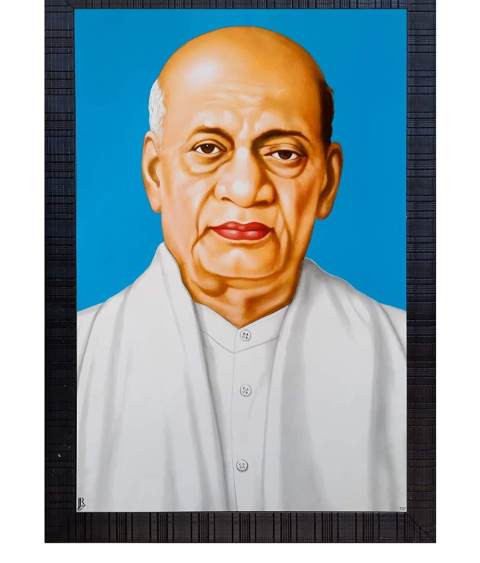
Above attached image of Shri Sardar Vallabhbhai Patel Ji.

- The foundation stone of the project was laid out by Prime Minister Jawaharlal Nehru on 5 April 1961.
- The construction for dam begun in 1987, but the project was stalled by the Supreme Court of India in 1995 in the backdrop of Narmada Bachao Andolan over concerns of displacement of people.
- One of the 30 dams planned on river Narmada, Sardar Sarovar Dam (SSD) is the largest structure to be built. It is the second largest concrete dam in the world in terms of the volume of concrete used to construct dam after the Grand Coulee dam across River Columbia, US.
- It is a part of the Narmada Valley Project, a large hydraulic engineering project involving the construction of a series of large irrigation and hydroelectric multi-purpose dams on the Narmada river.

Above attached image is of Location of Sardar Sarovar dam in Gujarat.
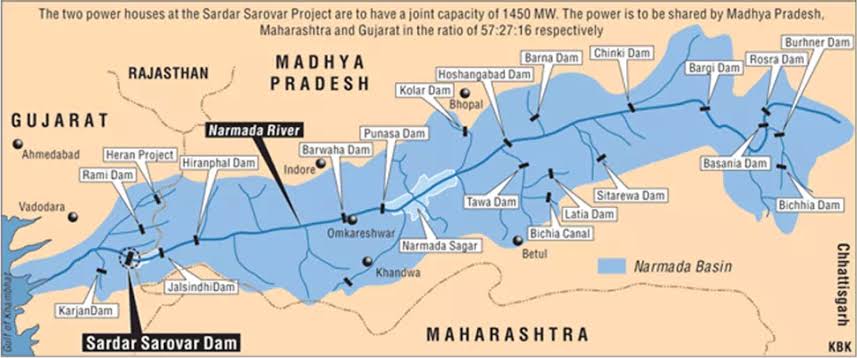
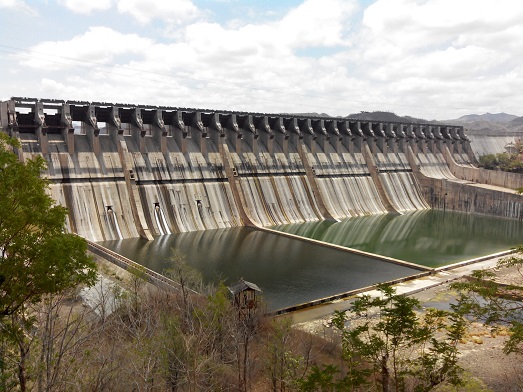
Above image is of Sardar Sarovar Dam in Gujarat.
About Narmada River;-
- The Narmada River, also called the Reva and previously also known as Narbada (Nerbudda). It is also known as “Life Line of Madhya Pradesh and Gujarat” for its huge contribution to the state of Madhya Pradesh and Gujarat in many ways.
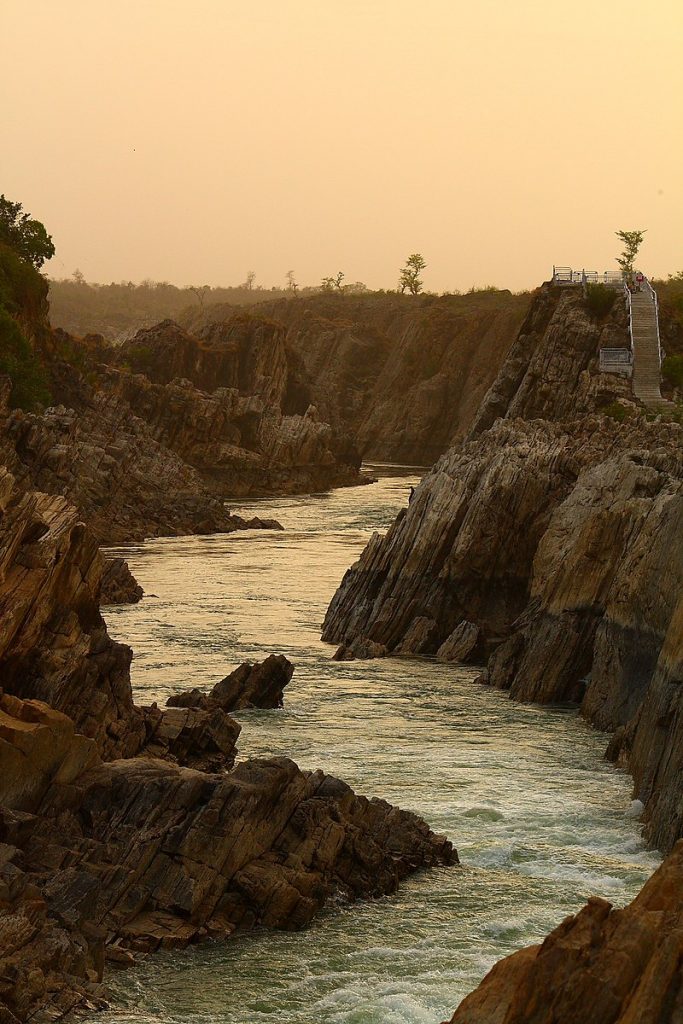
Above attached image of Narmada River at Bhedaghat in Jabalpur Madhya Pradesh, India.
- Narmada rises from Amarakantak Plateau in Anuppur district Madhya Pradesh.
- It forms the traditional boundary between North India and South India and flows westwards over a length of 1,312 km (815.2 mi) before draining through the Gulf of Khambhat into the Arabian Sea, 30 km (18.6 mi) west of Bharuch city of Gujarat.

Attached above image of Narmada River Map.

- Below are the Narmada river and its tributaries mentioned in below table;-
| Tributaries | |
| Left | Burhner River, Banjar River, Sher River, Shakkar River, Dudhi River, Tawa River, Ganjal River, Chhota Tawa River, Kaveri River, Kundi River, Goi River, Karjan River |
| Right | Hiran River, Tendoni River, Choral River, Kolar River, Man River, Uri River, Hatni River, Orsang River |
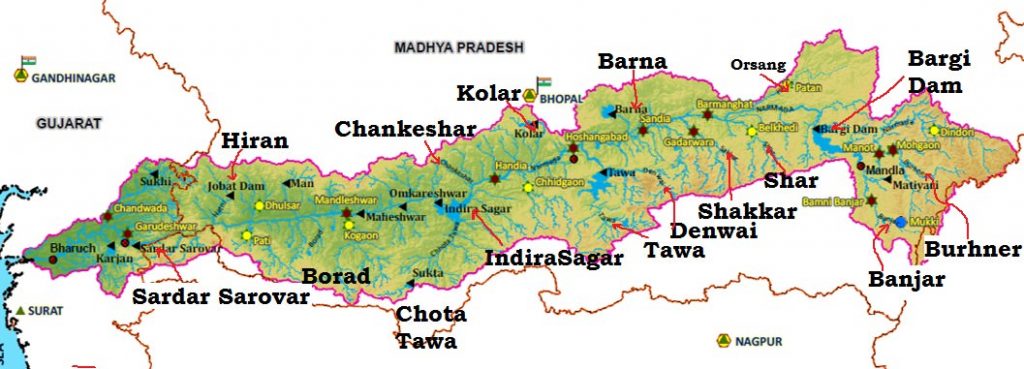
Above image is of Narmada River basin and its Tributaries.
- In Indian history, Kannada emperor from chalukya dynasty Pulakeshin II is said to have defeated emperor Harshavardhan of Kannauj on the banks of Narmada.
- The valley is famous for the gorgeous Maheshwari saris, which are handwoven and are comfortable in warm and cold weather, dressy and yet light, these saris have a dedicated, select following among Indian women.
- Narmada is one of only three major rivers in peninsular India that run from east to west (longest west flowing river), along with the Tapti River and the Mahi River.
- Narmada is one of the rivers in India that flows in a rift valley, flowing west between the Satpura and Vindhya ranges. Being the rift valley river, Narmada river does not form delta. Rift valley river forms estuaries.

Above attached image of Narmada River flowing between Rift Valleys of Vindhya and Satpura.
About Sardar Vallabhbhai Patel “The Ironman of India” ;-
- On 31 October 1875, ‘Iron Man of India’ Sardar Vallabhbhai Patel was born in Nadiad village in present-day Gujarat.
- Patel’s father Jhaverbhai had been a soldier in the army of Rani Laxmibai of Jhansi. His mother was Ladbai.
- Vallabhbhai Patel passed his matriculation in 1897 and then pursued law in England. After completing his law course in 1913, Patel returned to India and then established his practice at Godhra.
- In Ahmedabad, he happened to meet Mahatma Gandhi and after a couple of meetings, came under his spell. He became an ardent follower of Gandhi and started involving in political work.
- The Kheda campaign (1918) was a success and through a village-by-village tour, Patel and his associated compelled the peasants to refuse to pay taxes until the government met their demands. Patel raised an army of volunteers who helped the villagers in this work. This revolt directed a lot of sympathy towards the farmers’ plight. The government agreed to talk with Patel and also suspended taxes for a year. Patel emerged as a hero of the people.
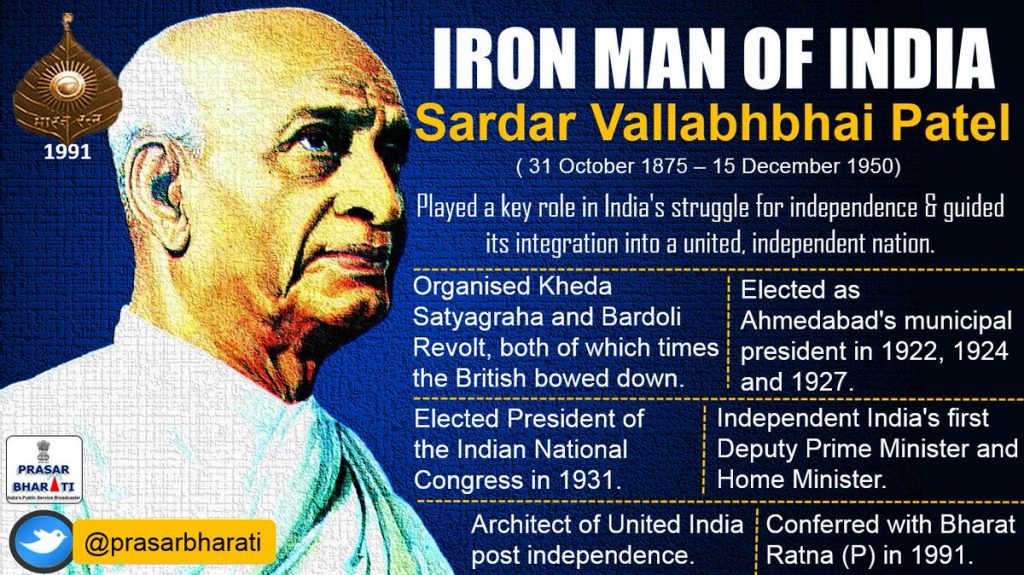
Attached above image depicts the famous live events of Sardar Vallabhbhai Patel Ji.
- After this in 1920, he was elected the president of the Gujarat Pradesh Congress Committee. He remained in that position till 1945.
- When Gandhi announced the non-cooperation movement in 1920, Patel supported him and worked tirelessly organizing it. It was then that he discarded his European garb and adopted Khadi.
- Patel was one leader who supported Gandhi when he suspended the movement in the wake of the Chauri Chaura Happened on February 5th, 1922) incident.
- Another major campaign led by Patel was the Bardoli Satyagraha in 1928. Here again, he asked farmers to refuse to pay taxes in the wake of floods and famines in the area, and a steep hike in taxes by the government. After the success of this campaign, the title ‘Sardar’ was bestowed on him by his colleagues.
- Patel was arrested during the Dandi Salt March (1930). After his release following the Gandhi-Irwin Pact, he was elected the President of the Indian National Congress (INC) in its Karachi session in 1931. He was again arrested in 1932.
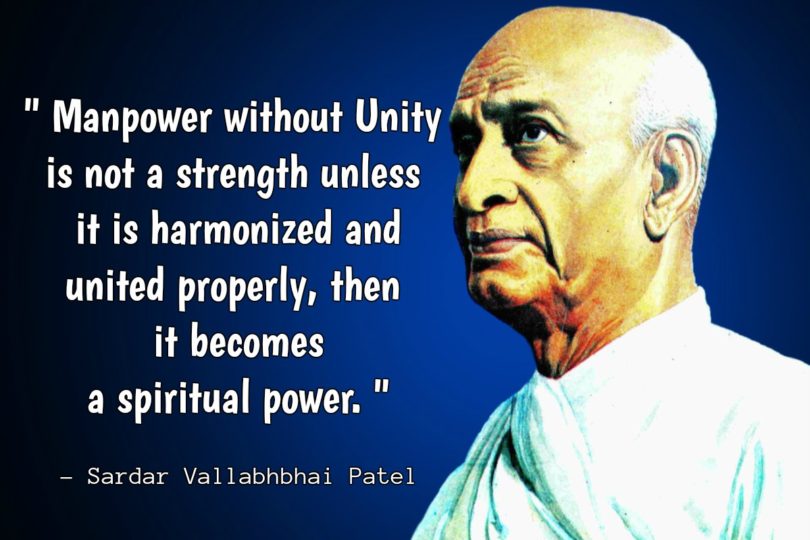
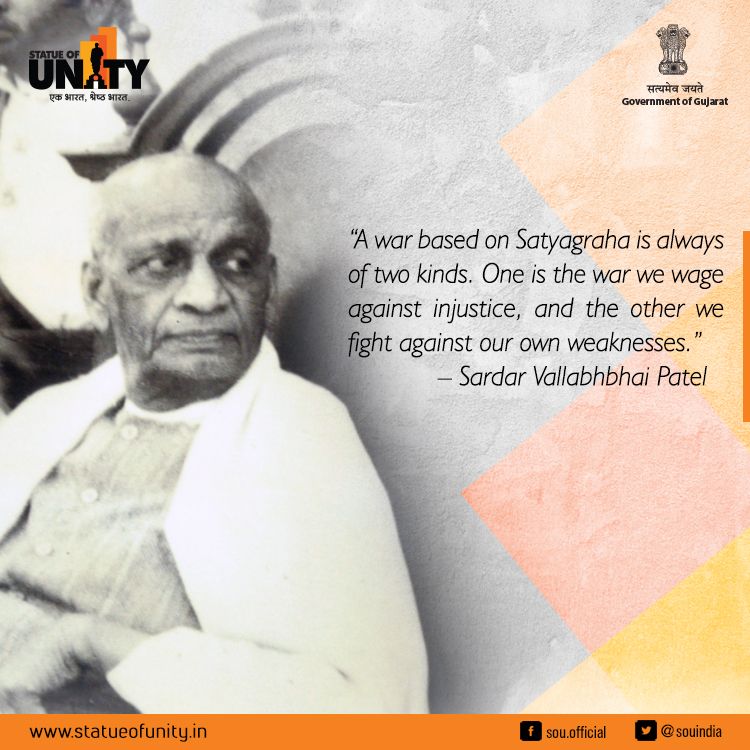
- Patel is revered in India not only for his role as a freedom fighter but also for his role in unifying the country after independence.
- India was politically composed of British Indian provinces and the princely states which numbered more than 600.
- Patel is considered as the “Bismarck of India” with regard to his stellar contribution in the political integration of the country. When the Nawab of Junagadh acceded to Pakistan despite having an 80% Hindu population, Patel sent the army there. With a combination of military and political tactics, the princely state was merged with India. Hyderabad also, with a similar situation (Hindu majority with a Muslim ruler) followed the Junagadh way. The Indian army, on the orders of Patel, invaded Hyderabad in 1948 and secured its union with India.
- Patel was in charge of the Provincial Constitution Committee and the Advisory Committee on Fundamental Rights, Minorities and Tribal and Excluded Areas, in the Constituent Assembly of India.
- For his role in setting up the modern civil services of India, he is also referred to as the ‘Patron Saint of the Indian civil services.’.
- He famously called the services the ‘Steel Frame’ of the country’s government machinery.
- Sardar Patel died in Bombay of a massive heart attack on 15 December 1950 aged 75.
- He was awarded the Bharat Ratna posthumously in 1991. His birth anniversary is observed as Rashtriya Ekta Diwas (National Unity Day) since 2014.
About Statue of Unity;-
- The Statue of Unity is a colossal statue of Indian statesman and independence activist Vallabhbhai Patel (1875–1950), who was the first Deputy Prime Minister and Home minister of independent India and adherent of Mahatma Gandhi during the non-violent Indian Independence Movement.
- The statue is located in the state of Gujarat, India.
- It is the world’s tallest statue with a height of 182 metres (597 feet).
- It is located on the Narmada River in the Kevadiya colony, facing the Sardar Sarovar Dam 100 kilometres (62 mi) southeast of the city of Vadodara and 150 kilometres (93 mi) from Surat.
- It was designed by Indian sculptor Ram V.Sutar, and was inaugurated by Indian Prime Minister Narendra Modi on 31 October 2018, the 143rd anniversary of Sardar Patel’s birth.
- Located on the Sadhu Bet island, near Rajpipla on the Narmada river, the Statue of Unity is located between the Satpura and the Vindhya mountain ranges.
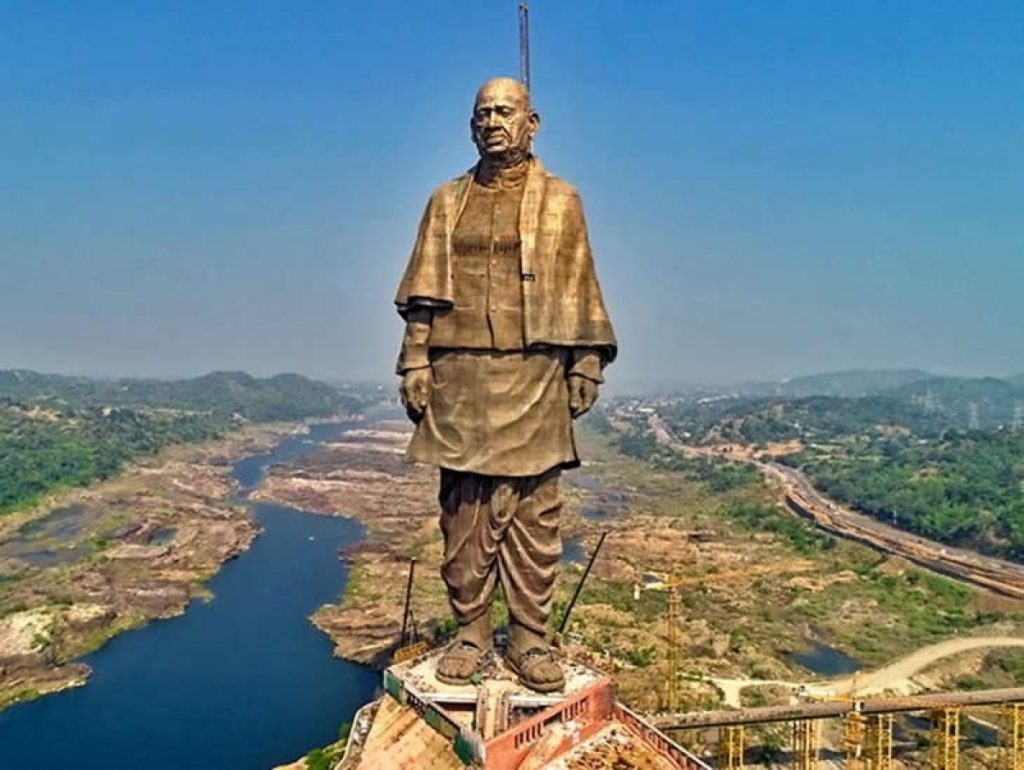

Above image depicts comparison of world famous statues with Worlds Largest Statue i.e. Statue of Unity.
About Rashtriya Ekta Diwas i.e. National Unity Day ;-
- National Unity Day is celebrated every year on 31st October to commemorate the birth anniversary of Sardar Vallabhbhai Patel.
- It is also known as Rashtriya Ekta Diwas.
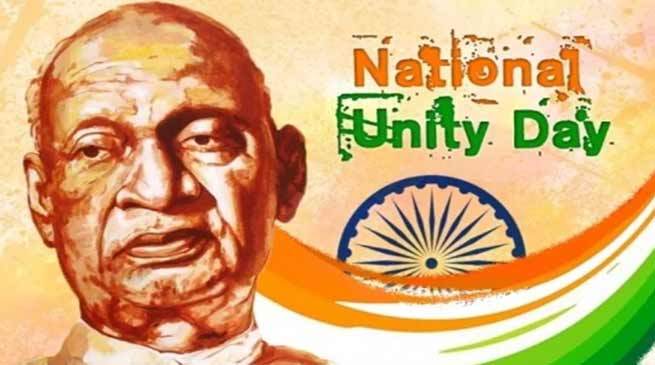

- It was celebrated for the first time in 2014 with the aim to pay tribute to the ‘Iron man of India’ by remembering his extraordinary works for the country.
- Several events are organized on this day like ‘Run For Unity’ a nationwide marathon to increase awareness about the contribution of Sardar Patel to national integrity, National Unity pledge, etc.
Extra Info;-
National Integration Day (19th November);-
- National Integration in India is very important to enhance unity among all sections of society in a country like India, which is replete with diversity in many spheres of life.
Below attached image explained about National Integration Day.

